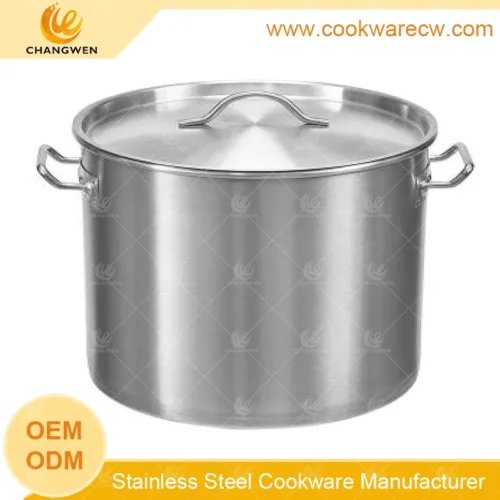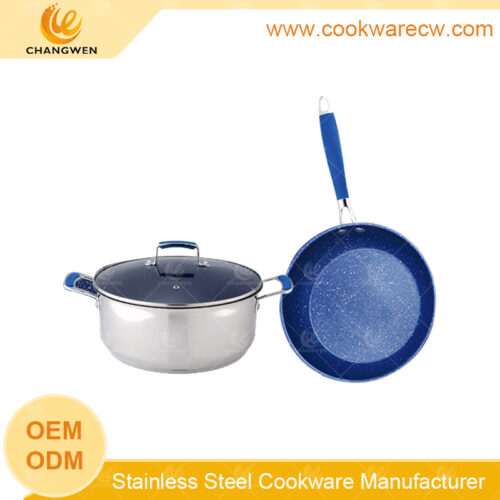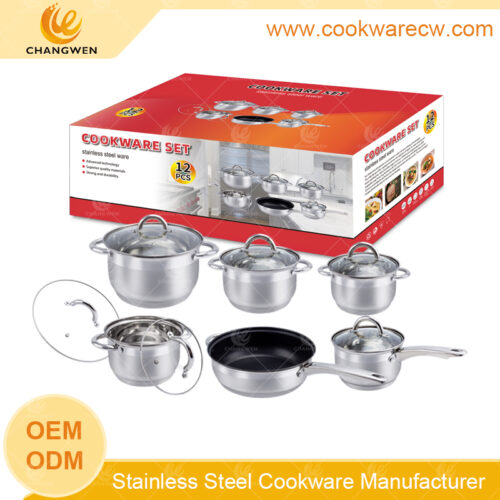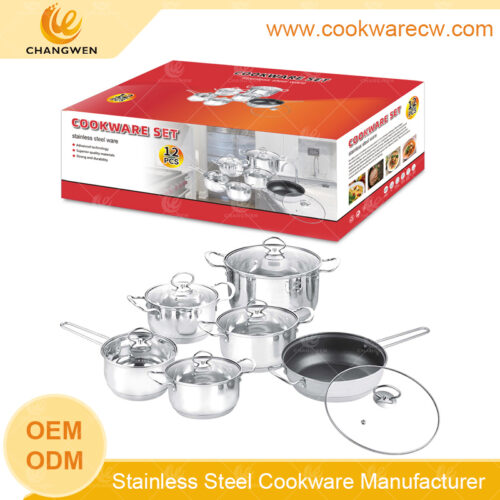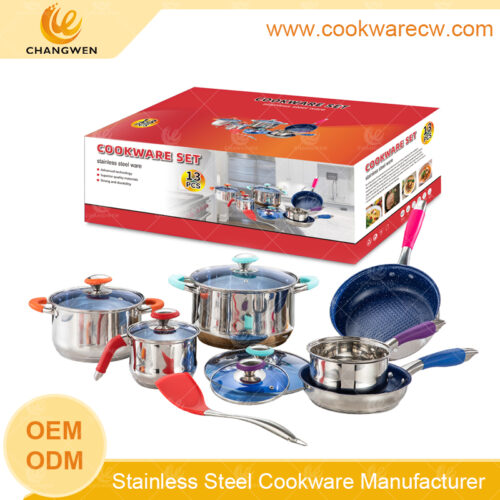Blog
Changwen is a leading cooking utensils manufacturers. We supply high quality stainless steel cooking pots and pans to all over the world. We can also customize the local hot-selling stainless steel pots and pans. Please send your requirements to Changwen.
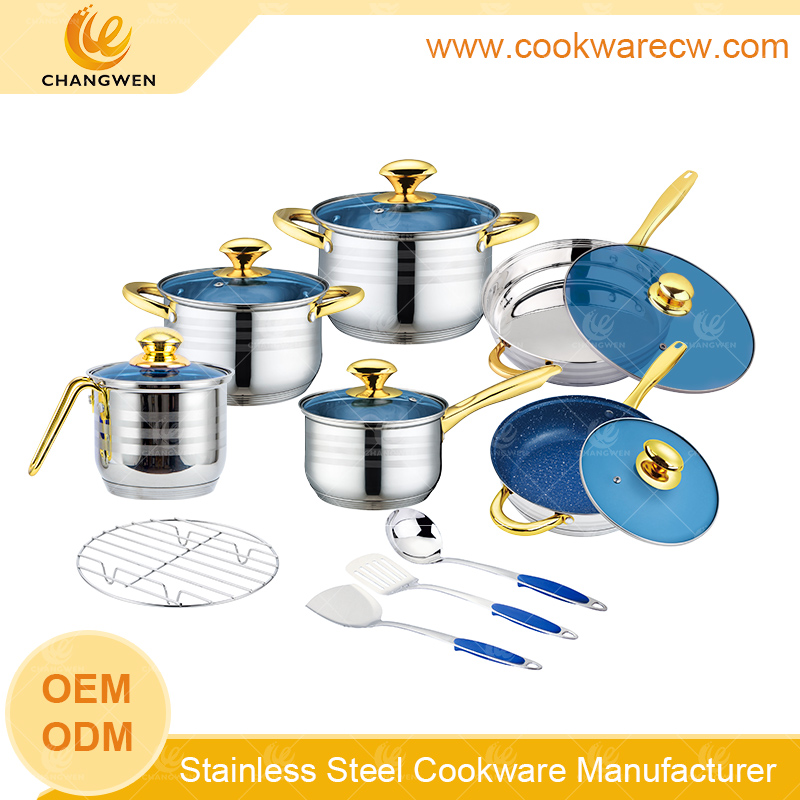
China Kitchenware: A Comprehensive Overview
Introduction
China, with its rich culinary heritage and diverse regional cuisines, has given birth to a vibrant and extensive kitchenware industry. From ancient times to the modern era, Chinese kitchenware has evolved significantly, reflecting not only technological advancements but also cultural and social changes. This article provides a detailed overview of China kitchenware, covering its historical development, main categories, market demand, major brands, consumer reviews, cultural significance, and future trends.
Historical Development
Chinese kitchenware has a long and storied history, dating back thousands of years. In ancient times, kitchen tools were often made from materials like clay, bronze, and iron. For instance, during the New Stone Age, pottery vessels such as cauldrons, steamers, and pots were commonly used for cooking. These early kitchen tools were not only functional but also carried cultural significance, as they were often used in rituals and ceremonies.
During the Shang and Zhou dynasties, bronze cooking utensils became more prevalent. Bronze cauldrons, with their excellent heat conductivity and durability, were widely used for boiling, steaming, and frying. These bronze utensils not only improved cooking efficiency but also showcased the social status and wealth of their owners.
In later periods, iron cooking utensils gradually replaced bronze ones. Iron cauldrons were more affordable and durable, making them accessible to a wider range of people. With the invention of the blast furnace, iron production increased, further promoting the use of iron kitchenware.
In modern times, Chinese kitchenware has undergone remarkable changes. The introduction of new materials like stainless steel, aluminum, and ceramics has greatly enhanced the functionality and durability of kitchen tools. Additionally, the integration of modern technology, such as smart kitchen appliances, has made cooking more efficient and convenient.
Main Categories
Chinese kitchenware can be broadly categorized into several types based on their functions:
Storage Utensils: These include items like refrigerators, cabinets, and shelves, which are used to store food and kitchen tools.
Washing Utensils: This category includes sinks, faucets, dishwashers, and drying racks, which are essential for cleaning dishes and kitchen tools.
Preparation Utensils: These tools are used for food preparation, such as cutting boards, knives, peelers, and mixers.
Cooking Utensils: This is the largest category, comprising various pots, pans, woks, rice cookers, pressure cookers, and other cooking appliances.
Dining Utensils: These include plates, bowls, chopsticks, spoons, and forks, which are used for serving and eating food.
Furthermore, Chinese kitchenware can also be classified based on usage occasions:
Commercial Kitchenware: Designed for use in restaurants, hotels, and other commercial establishments, this type of kitchenware is often more durable and efficient.
Household Kitchenware: Intended for home use, household kitchenware is designed to be practical, safe, and easy to use.
Market Demand
The demand for Chinese kitchenware is driven by several factors, including population growth, urbanization, and rising living standards. As more people move to cities and adopt modern lifestyles, the demand for high-quality, efficient, and stylish kitchenware continues to grow.
According to recent market research, the Chinese kitchenware market is expected to reach a significant size in the coming years. Consumers are increasingly seeking kitchenware that not only meets their basic cooking needs but also enhances their overall cooking experience. This includes products that are easy to clean, energy-efficient, and equipped with smart features.
In addition to traditional kitchenware, there is also a growing demand for specialty kitchen tools and gadgets that cater to specific cooking needs and preferences. For example, air fryers, multi-functional cookers, and smart kitchen appliances have become increasingly popular in recent years.
Cultural Significance
Chinese kitchenware is not merely a tool for cooking; it is also an important carrier of cultural heritage. Many traditional kitchen tools and utensils have been passed down through generations and are deeply ingrained in Chinese culinary culture.
For example, the wok is an essential tool in Chinese cooking and has been used for thousands of years. Its unique shape and design allow for even heat distribution and efficient cooking, making it ideal for stir-frying and other high-heat cooking techniques. The wok is not only a practical tool but also a symbol of Chinese culinary artistry and ingenuity.
Similarly, the steamer is another traditional Chinese kitchen tool that has been used for centuries. Steaming is a healthy and flavorful cooking method that preserves the nutrients and natural flavors of ingredients. The steamer is often used to cook dumplings, buns, and other traditional Chinese dishes.
In addition to these traditional tools, modern Chinese kitchenware also reflects the country’s rich cultural heritage. Many brands incorporate traditional Chinese elements into their product designs, such as using auspicious symbols or traditional patterns. This not only enhances the aesthetic appeal of the products but also promotes Chinese cultural values and traditions.
Future Trends
Looking ahead, the Chinese kitchenware industry is expected to continue growing and evolving. Several trends are likely to shape the future of the industry:
Smart Kitchen Appliances: With the rapid development of IoT and AI technologies, smart kitchen appliances are becoming increasingly popular. These appliances can be controlled remotely via smartphones or other devices and offer features like voice control, automatic cooking programs, and energy-saving modes.
Healthy and Eco-Friendly Products: There is a growing demand for kitchenware that is made from eco-friendly materials and promotes healthy cooking habits. For example, products made from bamboo, silicone, or other sustainable materials are becoming more popular.
Personalized and Customized Products: Consumers are increasingly seeking kitchenware that caters to their individual needs and preferences. This includes products with customizable features, such as adjustable temperature settings, interchangeable accessories, and personalized engraving.
Integration with Home Automation Systems: As more homes become equipped with smart home automation systems, kitchenware is expected to become more integrated with these systems. This will allow for seamless control and monitoring of kitchen appliances from a central hub.
In conclusion, Chinese kitchenware is a vibrant and dynamic industry that has evolved significantly over the years. From traditional tools and utensils to modern smart appliances, Chinese kitchenware offers a wide range of products that cater to the diverse needs and preferences of consumers. With its rich cultural heritage and innovative spirit, the Chinese kitchenware industry is poised for continued growth and success in the future.
Popular Blog
The 10 Best Cookware Materials: How Do They Compare?
How to distinguish between genuine and fake stainless steel pots
Precautions for the use of stainless steel frying pan?
What Cookware Works On Induction
How to judge the quality of your stainless steel pot?
What is the difference between stainless steel 18/10 and 18/8
How Do You Keep Food From Sticking to Stainless Steel
The Ultimate Guide: Where to Buy Large Stainless Steel Steamers
Tags
Recommend Products

Wholesale Stock Pot CW-SP002

Camping Pot Stainless Steel

heavy S/S 12pcs cookware set pots wholesale nonstick fry pan blue glass lid golden handle cooking pan milk pot CW-M1222

Stainless Steel Cookware Sets 10-Piece CW-M1228

hot sales cookware supplier 12pcs cooking pots and pans stainless steel cookware set fry pan saucepan coating tea kettle CW-M1223

New design stainless steel 12pcs pots wholesale wire handle and knob cookware mirror polished saucepan casserole kitchen pots nonstick coated frypan CW-M1218

popular stainless steel pots 13pcs cookware set with heat insulated colored silicone and glass lids milkpot casseroles nonstick frypan set CW-M1206G

9pcs stainless steel cookware set pots and pans with non-stick coating golden hollow handle and knob with rivets wholesaler factory CW-M0901

